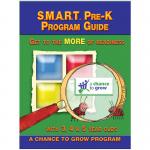
Buy CORE AND MORE FOR YOUR HOMESCHOOL
S.M.A.R.T. is a developmental approach to teaching that takes advantage of current brain research. Its developmental approach is a critical and foundational part of learning readiness! Students who have developed mature readiness skills through S.M.A.R.T. have shown an increased attention span, ability to focus, and improved reading scores.
S.M.A.R.T. (Stimulating Maturity through Accelerated Readiness Training) integrates fun and challenging physical activities into the classroom that are designed to prepare the brain for reading and learning in a way that traditional instruction does not. Compatible with any existing curriculum, the multi-sensory activities stimulate the brain and increase its capacity to learn.
Simple Preschool Readiness Games
To Play Together With Very Young Child
Put the Rabbit in the Hole Game:
Tell the child to put the rabbit into the hole and he/she will do the necessary repetitions happily (up to ten reps, with longer and longer spaces between the targets. The path to the target will be wobbly at first but the job of starting and finishing a line is basic and fun.
V V V V V
O O O O OPut the Apples on the Tree Game:
Draw a simple tree and have the child put apples on it. The apples will be varied squiggles for a time, but
Dr. Lyelle Palmer, co-developer of the S.M.A.R.T. program shares, “The responsibility for success lies with the teacher/trainer in knowing both the content and the students and also have appropriate measures for regular feedback to all and appropriate action in response to that feedback. One of my goals is for all students to master the content to the level I have in mind.”
The S.M.A.R.T. Program integrates movement stimulation for kinesthetic, tactile, visual, and auditory stimulation to produce unprecedented results. Young children must move and some moves are better than others. Dr. Palmer shares his Reading Readiness charts with us.
Thousands of teachers have been trained in school teams (including the physical education teacher) for brain stimulation in the classroom, gymnasium/floor, and playground. A huge part of the program is movement activities that produce high levels of agility and coordination, strength, endurance, and flexibility.
Valuable Wisdom from Dr. Lyelle Palmer:
S.M.A.R.T. research has found more efficient ways to teach common knowledge for emergent readers. Young children are vulnerable to confusion in the testing/guessing environment when confronted with difficult/advanced choices. We want students to concentrate on the content rather than the process. We want to process to become automatic and unmediated. These distinctions are important for speed and accuracy. Our letters and words are tools that we use for construction.
The Right/Left Choice:
The S.M.A.R.T program does not teach left and right because teaching both together can confuse some children for life. S.M.A.R.T. only teaches right and when individuals know “right” direction. The person then automatically know anything that is not the “right” direction is “left”.
The Upper/Lower Case Choice:
Early letters are all upper case where
The b d p q Choice:
Once all Uppercase letters are solid, B D P Q
Use ballpoint pens not pencils with erasers: What?
Use
S.M.A.R.T. uses lined paper.
The purpose of
Children will develop eye-hand coordination
beginning at ages 2 1/2 – 3 when we make it fun
to draw vertical lines beginning at the top mark
(dot or circle) and draw the line downward.
S.M.A.R.T. works to spare children arm/hand/finger fatigue from undue pressure and better control.
S.M.A.R.T. teachers may use paint instead of crayons, markers or pens. They may place a sponge beneath the paper so that pressure punctures the paper to help the child work to lessen the pressure. Taping papers/templates to the wall or easel forces the child to use the entire arm and develop control without pressing down so hard. Pencil grippers also help. Upper case letters for younger children provide longer strokes and create a base of coordination for later use with lower case letters.
S.M.A.R.T. Tracing is not practice ,
it is instruction with instant feedback.
Tracing lines and outlines on wall posters is also necessary. Play “Drivers Ed” found on page 70 of
So what is S.M.A.R.T.?
Simulating – Brains learn by seeing, hearing and touching things many, many, many times.
Maturity – Brain stimulation through the S.M.A.R.T. Pre-K program aims to mature sensory pathways of vision, auditory and tactile/kinesthetic.
Acceleration – To help messages travel in our brain with efficiency and speed.
Readiness – Creating foundation skills so the Brain Stem can perform automatic functions and the Cortex can perform higher functioning work.
Trains – The body and brain to be ready to learn
Compared to norms, half of the students in the Stimulating Maturity through Accelerated Readiness Training (S.M.A.R.T.) program achieve at the 75 percentile on formal and informal tests, and 25% are in the top 10 percentile.
Remember lines before circles!
S.M.A.R.T. CURRICULUM
Furry and the Stuffies are on board with the Minnesota Learning Resource Center and the S.M.A.R.T. Program. A 2011 study found that children who received S.M.A.R.T. programming maintained their reading gains through second grade, while more than half of the control students were failing again in reading by second grade.
We highly recommend you purchase
Learn more? http://actg.org/programs-services/mlr
